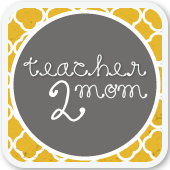My goal for Owen is that he will LOVE to read. I want reading to be a JOY for him. This was also my goal when I was teaching first grade. So every morning we had JOY READING. My students knew to come quietly into the classroom, put their backpacks on a hook, put their home lunch (if they had one) in the bin, put their homework and "green go home" folders in their cubbies and then quietly sit down and read. Each group of desks had a small tub with various books inside. They could choose any book (one at a time) and read as many as they could in the 10 minutes that I gave them.
I did this for a few reasons:
1. It reminded my students that once they entered my classroom, they were there to learn.
2. It helped get their minds ready for learning.
3. It helped them forget about how they lost their place in line when lining up outside and begin to focus on the day ahead.
4. It gave me some quiet time to take their homework out of their folders and take attendance, as well as speak to any parents who might be lingering at the doorway. :)
5. It helped my students love to read and understand that it is important that we do it daily.
I rotated their tubs daily and then switched the books out weekly. I tried to stay organized. :)
It was also important that our classroom always have a comfy place to read where there are plenty of books to choose from.
Now, how do we do this at home?
First off, we need to be organized and have books easily accessible to our children. Owen doesn't have many that he's interested in quite yet, but there is a basket underneath an end table in our front room filled with his favorites.
There is also a bookshelf with some classic picture books in his room.
Next, you need to make a comfortable and inviting place for your child to read. Whether it's a fun bean bag chair or fort, make it enjoyable.
Last, you need to be involved. You need to read to and with your child as often as possible. Cuddle while reading or let your child read to you. Make it a special time. This way your child will have positive feelings when she thinks about reading and her love of reading will continue to grow as you help her nourish it.
I can't wait to continue to do this with my son!
What do you do with your children to foster a love and joy of reading?






































